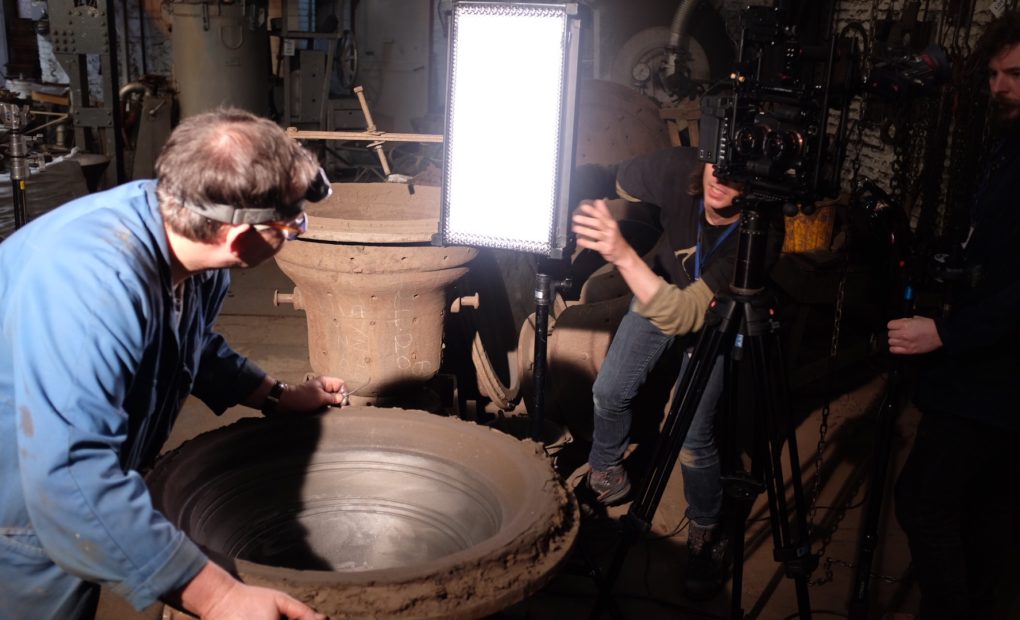
360 production tips – how to light a shoot
I hear far to often that “you can’t light in 360 content”. It’s absolute rubbish, you can, and where possible you should! This 360 production tips post tells you how we approach lighting in 360 scenes at Visualise, some of the tricks we use and should dispel some of the smoke and mirrors that abound! Our DOP Jonathan Curran spearheads the lighting on our shoots and has contributed to the techniques below.
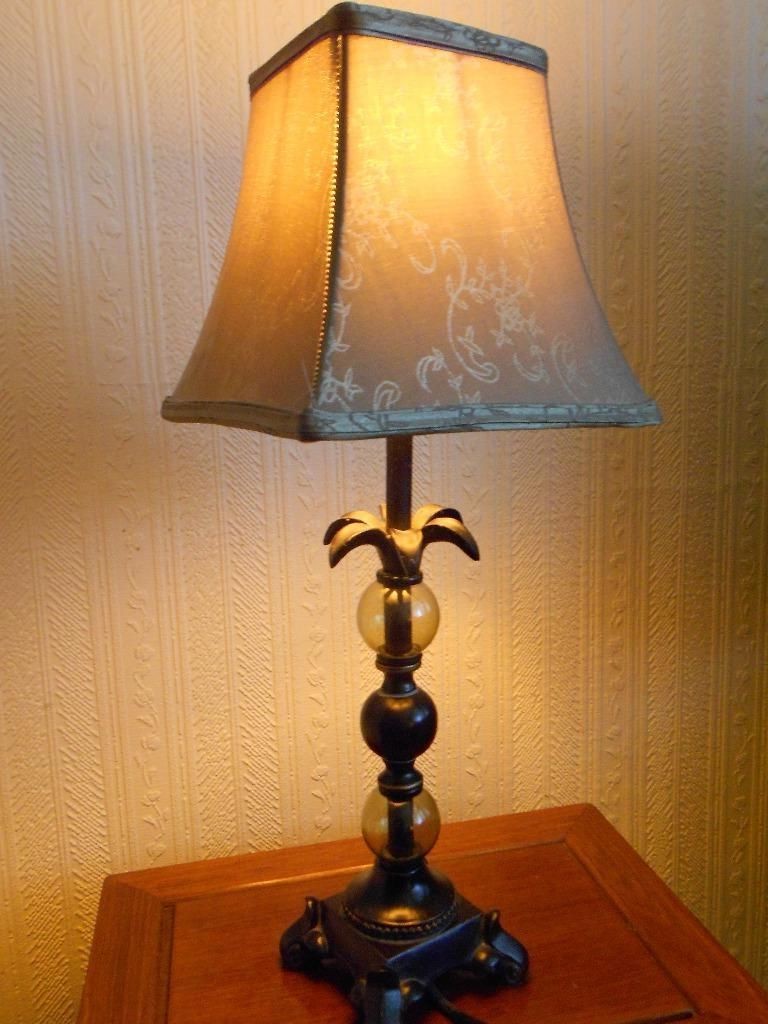
Practicals
The practicals are simply the lights that already exist in a scene such as bedside lamps, ceiling lights, desk lamps etc. The bulbs can be removed and replaced with far more powerful fittings or fixtures with dimmers/adjustment. These are always the first port of call as they are the most natural lighting to play with.
These new, powerful, replaced practicals can flood the scene with light, reducing noise and allowing for control of the look and feel of the scene. However, they can also give over exposed highlights on the lights themselves, so we often shoot second, exposure plates and pull these down in post (see later).
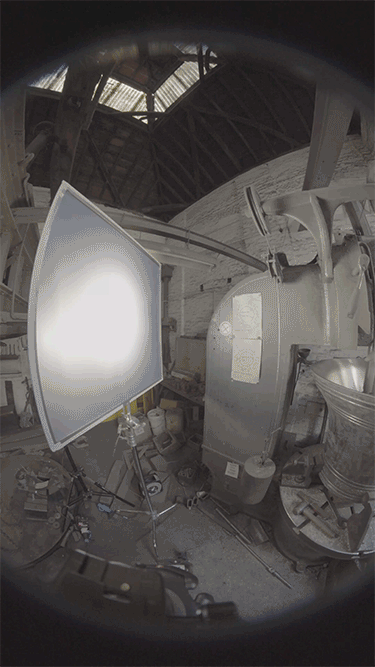
Clean Plating
Next up, if the practicals are not enough then just bring along any lighting you would normally want on a traditional set e.g. Kino-Flows. Shoot with them in place and then remove them and shoot the scene again without them. This is called clean plating – the resulting two videos are overlaid in post and the clean plate is used to mask out the lights. Clean plating is something we use for far more than lighting though, often, if a director wants to be with the actors in the scene then the clean plate will be used to edit him out too.
The clean plates can be used on the original plates or on the stitched output from different exposures. The example to the left shows a clean plate being applied to the raw footage.
Exposure Plates
In 360 video you are often restricted to small cameras with low dynamic range or to scenes that have a higher dynamic range than you can capture perfectly across the whole 360 degree sphere. If the camera is in a locked position, you can shoot plates of the scene at different brightnesses to allow you to capture each window, light or the sky at it’s perfect exposure. As with the clean plating, these can be overlaid in post to allow the best parts of the scene to be pulled through.
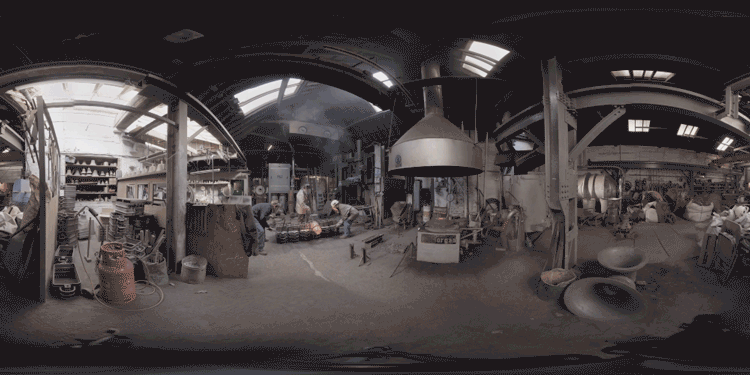
Wipe on and off of exposure plate being applied
Hiding Lights
Lights can be hidden in a number of places in 360 shots, the simplest being on the tripod or monopod of the camera itself. Strips of LEDs can easily be edited out in post when the floor of the shot (nadir) is replaced. Otherwise, objects in rooms can be used to occlude the lights, hiding them behind furnishings for example.
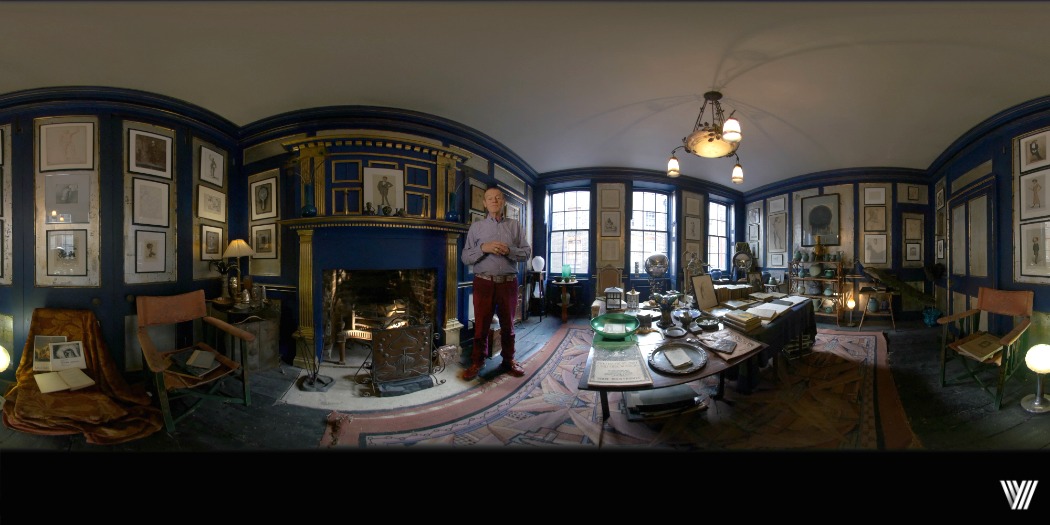
This scene, shot in Spitalfields is full of hidden lighting, replaced practicals and clean-plated out lights.
Carrying the light
Carrying the light is an expression to explain the boosting of the light from a natural source. For example, if there is a window in the shot but it’s not giving enough light to lift the face of the main character in the shot, then this can be augmented with another light. The light can then be removed in post, unless it’s already occluded by objects in the scene. The importance here is that the light on the scene looks natural, and if the user looks back to the source they don’t see a light but, for example, a light that’s part of the room or a window with the daylight outside.
In Conclusion
Lighting live action 360 VR scenes is entirely possible, and makes a huge difference to the final outcome of the footage. If you’re clever with where lights are hidden and plan for lighting early, then all of the above can be achieved. To see the results, check out a couple of our recent projects, FT & Google’s Dublin in the Dark and TEMPEL for ZDF_neo.
Come back soon for more 360 production tips from the Visualise team!

Comments
Responses
Samir Mukherjee says
Great idea. please include me for your future reference documents etc.